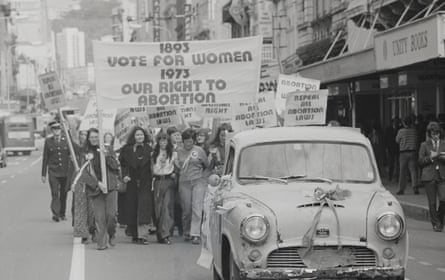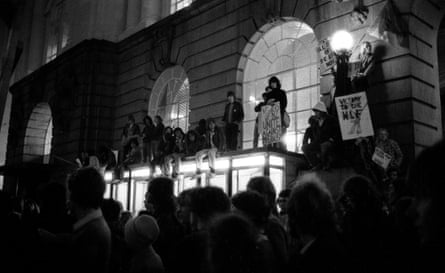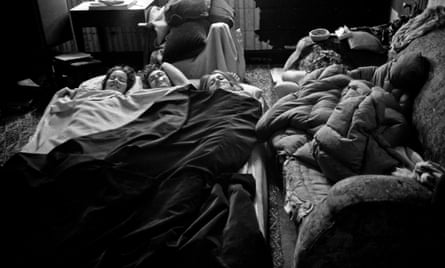Jumping Sundays: 1960s counterculture rejecting conservative New Zealand
J.The umping Sundays were a series of weekly ‘happenings’ in Auckland’s Albert Park in the late 1960s. Like a kaleidoscope of guitars, bongos, ponchos, beads and kaftans, swirling in a waft of incense and marijuana, hippies – pejoratively called freaks, weirdos, radicals and dropouts – enjoy live music and dance, People gather to listen to rebellious music. It finds a sense of community in making war speeches and rejecting monochromatic conservative landscapes. new zealand at the time.
Armed with a long-term utopia and a desire to embrace their parents with alternative approaches to living conditions, politics, culture, and sexuality, they came together, Vietnam War.
These gatherings were not strictly legal, but were tolerated by the City Council on the condition that they were restricted to Sunday afternoons.
Born in 1958, Wellington-based author Nick Bollinger was still a child when rumors of New Zealand’s burgeoning counterculture began, but his keen curiosity kept him attuned to a sense of cultural change. was
“All this exciting stuff was happening around me,” he says. “Then when I was in middle school, on a Friday night me and my friends went to school. [counterculture bookshop] Read the Resistance book, just sit back and read the book off the shelf. It was the entrance to another world. “

A lifelong inquiry into New Zealand’s particular angle to the global counterculture movement is the basis for Bollinger’s book Jumping Sundays: The Rise and Fall of the Counterculture in Aotearoa New Zealand. In this vibrant social and cultural history, Bollinger documents music, radical politics, drugs, sex, religion, spirituality and the communities at the center of the New Zealand counterculture awakening.
“People were starting to think, ‘School is hell, haircuts are hell.’ There’s a new world out there, and I’m going to be a part of it,” says Bollinger.
“Some people blew up buildings, others had their minds blown.”
Music has been an important influence on the New Zealand counterculture. Bollinger likened his jumping Sunday event to his local cover version of an international song he heard on the radio in the 1960s. The women made their own clothes, but instead of being influenced by fashion magazines, they were studying what Jimi Hendrix wore on record jackets.
According to Bollinger, the two most successful festivals were the 1972 Serenity Festival in Putiki, Wanganui, and the 1973 Great Nagaruawahia Music Festival, which was held at Redwood in the West in the 1970s. It was a festival. Auckland It was a disaster.

“At Redwood, there was a police-walled riot. Nobody knew how to run a festival,” says Bollinger. “This was just three months after Woodstock. The Woodstock film hadn’t come out either, so there was no established model. Police were grabbing the microphone, so it was a disaster.” was.”
Alternatively, the Nagaruawahia Music Festival utilized a community-oriented Maori security company.
“The great Nagarawahia music festival was like the rising sun. People were left alone and nothing was too much trouble.”
Manaakitanga, or hospitality, was the key difference from Redwood. Importantly, Serenity organizers partnered with local iwi. “On the last day he had 500 left, so the marae wore hangi for the hippies. There was even a vegetarian hangi. This is his rock festival like no other in the world.”
Another notable feature of New Zealand is the off scheme approved by Norman Kirk’s Labor government. The idea of the commune movement was imported. Americans came here to escape draft or were politically disillusioned. Optimistic promise of being able to reopen.
“New Zealand has so much space, it’s not that easy land, but it was pretty easy to get off the grid here.” We want to live, let’s see what we can do,” laughs Bollinger.

“I don’t think anywhere in the world where living off the land was seen as a positive thing by a government.”
In a dizzying cast of bohemians and radicals, Jumping Sundays illuminates the compelling story of New Zealander John Eathham. A young poet from Gisborne, Etham eventually moved to London, where he worked with beat poet Allen Ginsberg and poet Lawrence He, founder of The City of San Francisco Bookstore and Publishers. was with Feringhetti.
Etham also played a disastrous role as the source of Syd Barrett’s LSD and was the first person to be arrested (and eventually acquitted) for LSD possession in London.
“He was a real bohemian from Hawke’s Bay who was taught by nuns.”
According to Bollinger, by the time the string of mainstream Nambassa festivals unfolded between 1976 and 1981, the New Zealand counterculture was divided into various interest groups with little in common.
“The women’s movement is an example of that. They’re like, ‘Oh, these hippie men can’t help us! They’re just as sexist as our fathers.
“It was the same with Maori and Pacifica.
https://www.theguardian.com/culture/2022/oct/09/jumping-sundays-the-1960s-counterculture-that-rejected-conservative-new-zealand Jumping Sundays: 1960s counterculture rejecting conservative New Zealand
